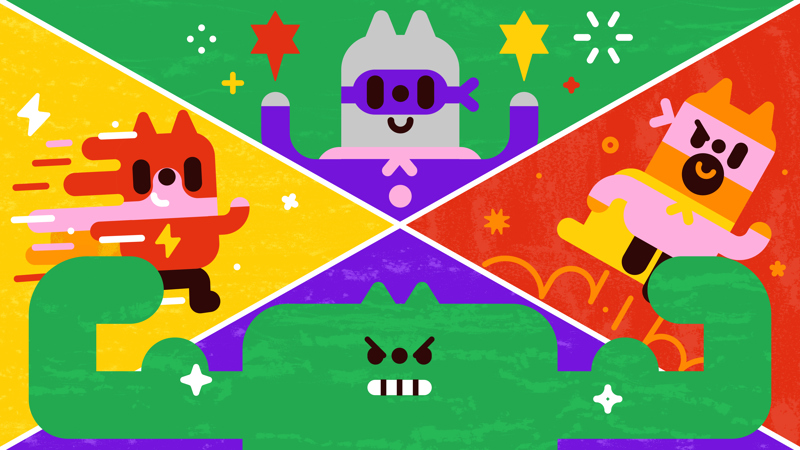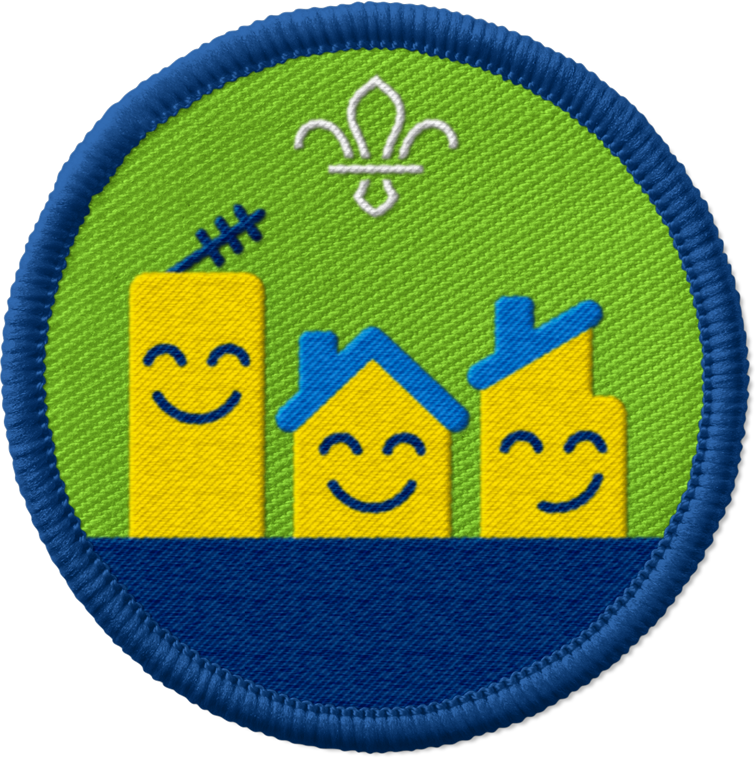
No capes!
You’ll need
- A4 paper
- Coloured pens or pencils
- Dice
Before you begin:
- Draw or print a simple superhero template for everyone to colour in. You can find these online with a quick Google search.
- People should only draw or have a copy of the outline of a superhero.
- They’ll need to draw an outline of all the features that make up their ‘Super suit’ onto their outline. Their ‘Super suit’ features are a top, trousers, shoes, gloves, a mask, and a cape.
- If you’re drawing a superhero, you could add this to the session and encourage everyone to draw their own superhero. You could have an example for people to copy or trace, or you could make a stencil.
Story time
- Everyone should sit in a circle.
- Someone should read The Community Impact Superheroes by Jess Connett. Make sure you save a copy of the story before the session.
- After reading the story, everyone should take some time to reflect on it as a group. We’ve included some questions to help you reflect in the pink box below.
Superheroes! Assemble!
Queen of everything green: here comes Eartha. She wants everyone to protect the natural world while there’s still time.
She swoops her cape made of recycled rubbish and cleans up the whole area. SWISH!
In her backpack she carries clean water to help thirsty animals.
Her superpower is: recycling any material, including bad guys!
Here’s The Home Defender. He wants to live in a fairer society, where everyone has a safe home of their own.
He wears shoes made from blocks of flats, and creates homes with each step.
Around his neck is a key that can open the door to anyone’s new home.
His superpower is: super listening. Homelessness is often complicated. The Home Defender always listens, even to the longest stories.
Here’s Professor Peace! She believes all children deserve to grow up feeling safe, wherever they are from and wherever they live.
Professor Peace speaks every language in the known universe.
Her coat turns into a blanket fort, and everyone who goes inside instantly feels safe.
Her superpower is: x-ray friendship vision. When Professor Peace introduces you to someone new: congratulations, you just became best friends.
Lucy Lucid is the archenemy of The Mind-Boggler. She wants you to know what mental health is and how to look after it.
When The Mind-Boggler plays tricks like Confusion, Worry, or Feeling Bad, Lucy zaps his power by talking about it with a friend. TAKE THAT!
She catches stress in her lunchbox, locks the lid and throws away the key.
Her superpower is: instant mindfulness. Lucy can turn bad thoughts into nice ones in 0.0001 seconds – an unbeaten record.
Meg-Ability believes in a more considerate world for people living with disabilities.
Meg uses her mega mobility aids to defeat anyone who says she can’t do something.
She can make a room autism-friendly with just one look.
Her superpower is: speaking out. Meg always talks about important things, and never stops fighting for change.
Finally, here’s Captain Kindness to transform society.
No action is too small for Captain Kindness. Every new haircut gets complimented; every borrowed item gets returned.
Captain Kindness has so many kind thoughts that he is warm to the touch.
His superpower is: help waterfall. Anyone who meets Captain Kindness gets so filled up with kindness that it overflows like a waterfall, filling up everyone else.
By Jess Connett
Where’s my super suit?
- Everyone should sit in a circle on the floor.
- The person leading the activity should give everyone a piece of paper with the superhero template on it. Everyone should make sure they can reach some coloured pens or pencils.
- Everyone should choose the name of their superhero and write it at the top of the paper.
- The first person should roll the dice. The number it lands on will tell them which piece of superhero clothing they can colour in on their template.
- The first person should pass the dice to the next person and colour in the right part of their superhero costume.
- Everyone should keep rolling and passing until everyone has completed their superhero costumes.
Pick your powers
- Now everyone has a superhero with a great costume, it’s time to pick their powers.
- Everyone should decide which powers their superhero has. They should write them down next to their superhero. The people leading the activity should help everyone with the writing.
- Now it’s finally time for everyone to put their superheroes to work. Everyone should take it in turns to tell the rest of the group about their superhero and how they help people.
Reflection
The Community Impact Superheroes
- Did people have a favourite superhero in the story?
- If people could have one of the superpowers from the story, which superpower would they pick?
Super suit
- What would everyone’s superhero costumes look like if they had one?
- Was it tricky to quickly choose all the different colours?
Pick your powers
- What superpowers did people choose and why did they choose them?
- How could people be like their superhero and use their powers to help people?
Safety
All activities must be safely managed. You must complete a thorough risk assessment and take appropriate steps to reduce risk. Use the safety checklist to help you plan and risk assess your activity. Always get approval for the activity, and have suitable supervision and an InTouch process.
- Writing the names and powers might be tricky – adults should help with the spelling or writing if needed.
- Some young people might want to draw the outline of their superhero themselves. They could copy or trace a template, or you could make a stencil.
- You could allow people to roll the dice again if they roll a number they’ve already rolled.
- Large foam dice can be much easier to handle and roll than small plastic ones.
- Make sure there are enough helpers to support people with drawing and writing.
All Scout activities should be inclusive and accessible.
Take your superhero home, show them to friends or family and explain their powers, and see if you can become your very own superhero and help in your community.
Encourage everyone to choose their own names, colours, and powers. You could offer suggestions or come up with some examples before the session to help.
